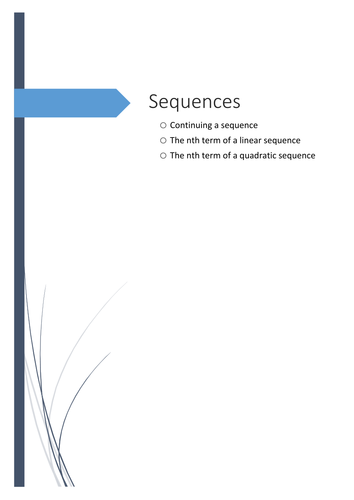








Lesson 1: Continuing a sequence
This lesson looks at students being able to continue a sequence from a given rule, or obtaining a pattern from the numbers already given in the sequence. Through worked examples students get their first insight to the work involved with sequences.
Lesson 2: Continuing a pattern
This lesson concentrates around continuing patterns. Several worked examples look at numerical responses to the patterns generated. I usually teach this lesson after continuing a sequence and before the lesson on using the nth term.
Lesson 3: Using the nth term
This lesson is always taught after the introduce to continuing sequences. This lesson demonstrates how sequences can be generated by formulae. Also I point out along the way how the sequence going up by a certain number doesn’t imply that we add whatever each time but that it belongs in some way to a particular multiplication table. This, I find, helps with the next lesson on finding the nth term.
Lesson 4: Finding the nth term
This lesson is mainly about finding the nth term of any linear sequence. Through worked examples students very quickly learn how to find the nth term of sequence such as 5, 8, 11, 14, etc…
The lesson also touches on other sequences but through their new found understanding of the linear sequence. This lesson is taught after the lesson on using the nth term and, dependent on age or ability, before the lesson on sequences which involve quadratic solutions.
Sequence Workbook
This selection of work can easily be printed as an A5 booklet. The booklet consists of questions for students to attempt in class or as a piece of homework and compliment the lessons on sequences I use yearly.
Something went wrong, please try again later.
This resource hasn't been reviewed yet
To ensure quality for our reviews, only customers who have purchased this resource can review it
Report this resourceto let us know if it violates our terms and conditions.
Our customer service team will review your report and will be in touch.
